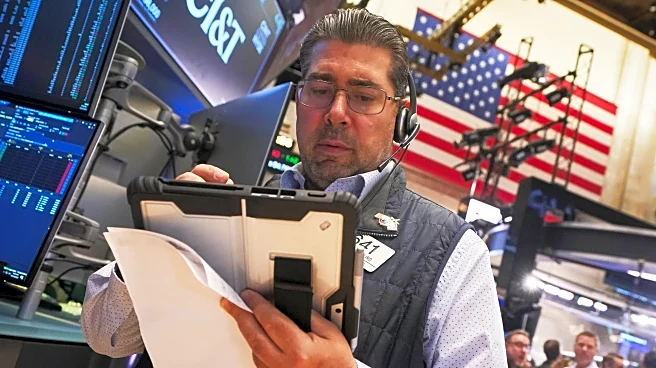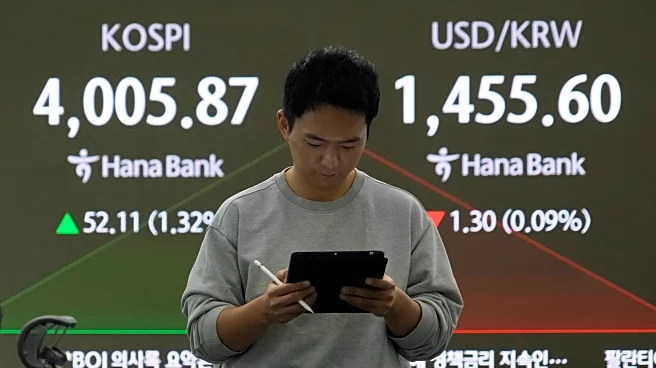What's Happening?
UBS economists have issued a concerning report on the U.S. labor market, highlighting a significant increase in layoffs and a slowdown in hiring. According to the report, October saw 157,000 layoffs, the highest
monthly total since July 2020, with technology and warehousing sectors particularly affected. The report notes that unemployment insurance claims, layoff announcements, and WARN notices are exceeding pre-pandemic levels. Economists, including Citigroup's Veronica Clark, suggest that businesses may not feel the need to retain workers longer than necessary. UBS's analysis indicates that the labor market is experiencing a 'bathtub' effect, where layoffs are steady and hiring is slowing, leading to a decrease in total jobs. The hiring rate has dropped to levels typically seen during recessions, and private-sector payrolls have been declining by an average of 36,000 jobs per month. Household employment has been falling by about 72,000 jobs per month, which is insufficient to maintain a stable unemployment rate.
Why It's Important?
The weakening labor market poses a significant risk to the U.S. economy, potentially undermining household confidence and consumer spending. The report suggests that the labor market's contraction could impact the broader economic recovery. The rise in underemployment and part-time work for economic reasons indicates slackening demand, contrary to expectations from immigration restrictions. Job openings are declining, and seasonal hiring plans for the holidays are below pre-pandemic norms, which could further dampen consumer and business sentiment. The Federal Reserve is facing a dilemma, with some officials advocating for interest rate cuts to support the labor market, while others remain concerned about inflation. The labor market's deterioration could lead to more pronounced economic challenges if layoffs continue and hiring remains sluggish.
What's Next?
If the current trends persist, the labor market may face more obvious contraction, potentially affecting household confidence and consumer spending. The Federal Reserve may need to consider interest rate adjustments to buffer the labor market, although inflation concerns remain. The release of federal economic data, once the government shutdown ends, will be crucial for economists and policymakers to assess the situation accurately. The upcoming jobs data and inflation report will provide insights into the labor market's trajectory and inform future policy decisions.
Beyond the Headlines
The labor market's challenges highlight broader economic vulnerabilities, including the impact of automation and artificial intelligence on job security. The decline in labor force participation and the increase in underemployment suggest structural issues that may require policy interventions. The situation underscores the need for a balanced approach to economic recovery, considering both employment stability and inflation control.













